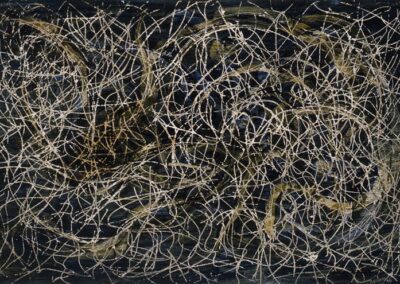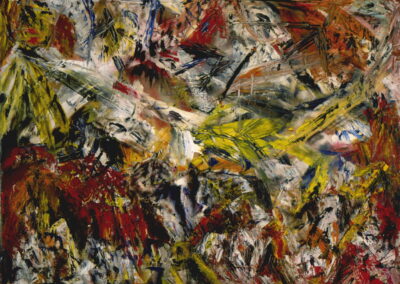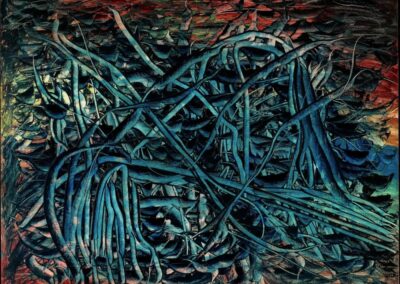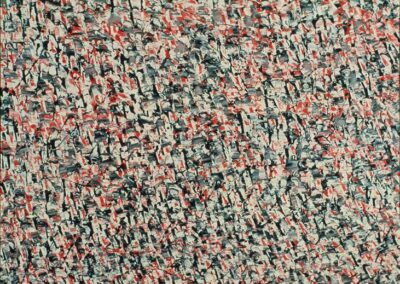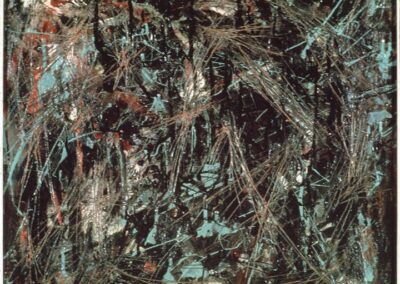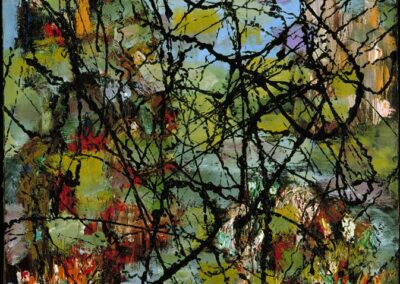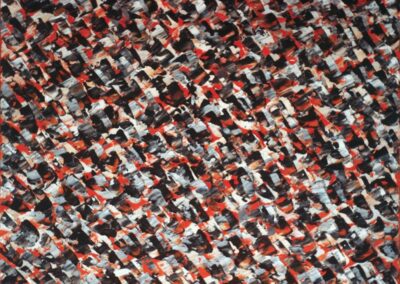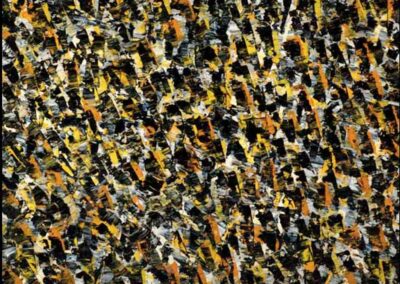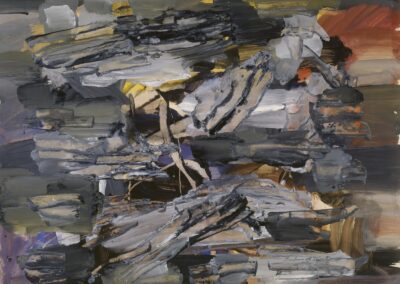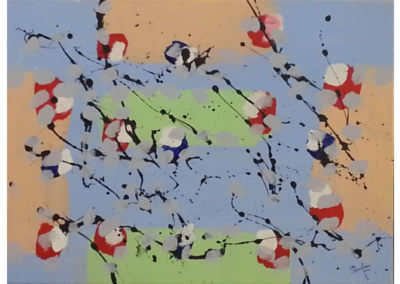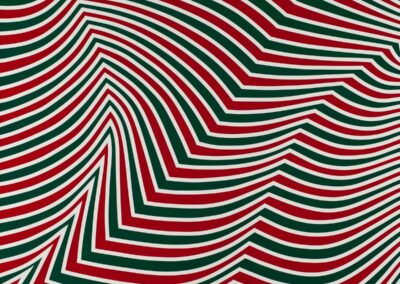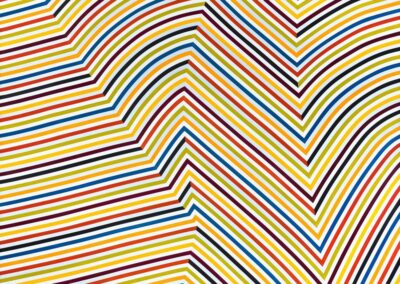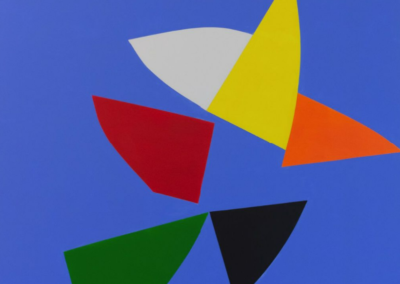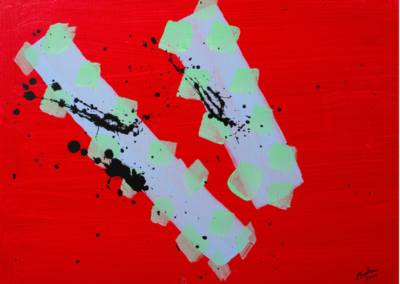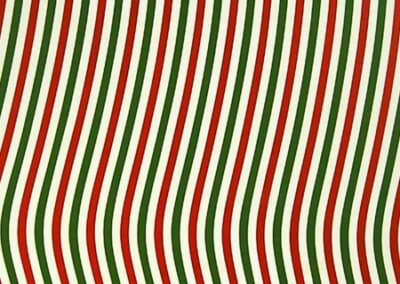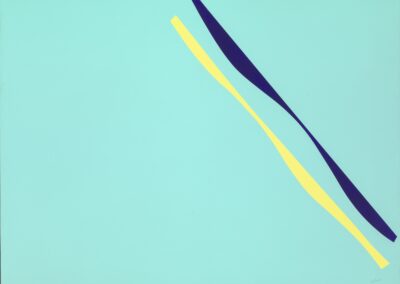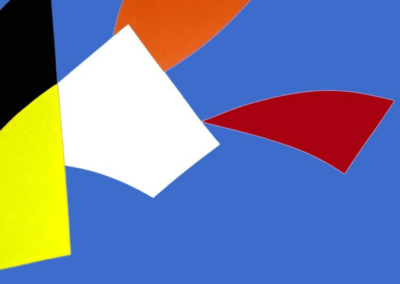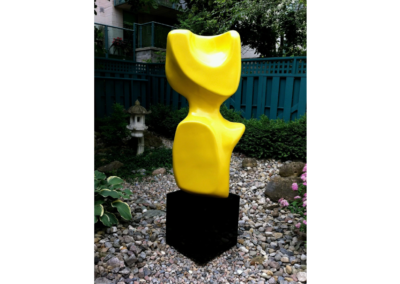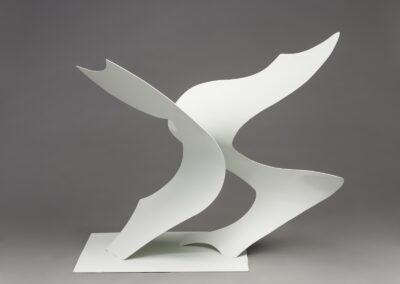Our next Artist You Need To Know is Marcel Barbeau (1925 – 2016).
Barbeau was a member of the Order of Canada, the Royal Canadian Academy of Arts and l’Ordre national du Québec. Primarily renowned for his painting, Barbeau also worked in sculpture, graphic arts and performance. Born in Montréal, he studied with Paul-Émile Borduas at the École du Meuble in Montreal, and later shared a studio with classmate Jean-Paul Riopelle. Borduas, Riopelle, Françoise Sullivan and Barbeau were core members of the group which became known as the Automatistes – arguably the most significant artistic movement in the history of Canada, and their legacy is still being felt today in the cultural sphere of Quebec.
“I do not look for beauty, I attempt to produce a painting that is vibrant.”
Barbeau signed the infamous Refus global in 1948 which has come to be seen as the defining document of the Automatiste movement and was essential to Quebec’s Quiet Revolution which would change the province – and the country – for decades to come. Le Refus Global ‘was a manifesto that completely rejected the social, artistic and psychological norms and values of Québécois society at the time. Calling for “an untamed need for liberation,” the manifesto cried out for “resplendent anarchy” and criticized the “cassocks that have remained the sole repositories of faith, knowledge, truth, and national wealth.”‘ (from here)
A pioneer of the Automatiste movement, Barbeau helped build a foundation for modern art in Quebec: but he was not parochial, and was also one of the first Quebec artists to frequent the New York scene in the early 1950. Barbeau was familiar with the American abstract expressionist movement and, later, the OP Art aesthetic: both of these schools were incorporated into his practice.
From the Montreal Museum of Fine Art: “Barbeau [remained] faithful to an approach strongly rooted in spontaneity, based on a questioning that is both intuitive and experimental. Adhering to an ideology of non-conformism, he bequeathed a protean body of work, synonymous with great freedom of expression.”
His work is to be found in over fifty public and private collections: notable ones include the National Gallery of Canada, the Art Gallery of Ontario, the Stedelijk Museum (Amsterdam), Agence de coopération culturelle et technique pour la Francophonie (Paris, France), Agnes Etherington Art Centre (Kingston, ON), Archives de la critique d’art (Rennes, France), Art Gallery of Hamilton, Art Gallery of Peterborough (Peterborough, ON), Canada Council Art Bank (Ottawa, ON), Beaverbrook Art Gallery (Fredericton, NB), British Museum (London, UK), Chrysler Museum (Norfolk, Virginia, USA), Confederation Centre of the Arts (Charlottetown, PEI), Galerie de l’UQAM (Montréal, QC), Glenbow Museum (Calgary, AB), Istituto Culturale del Arte (Catania, Italy), Kenderdine Art Gallery (Saskatoon, SK), Kitchener-Waterloo Art Gallery (Kitchener, ON), Museum London (London, ON), McMichael Canadian Art Collection (Kleinburg, ON), Musée d’art contemporain de Montréal (Montréal, QC), Musée d’art contemporain de Montréal (Montréal, QC), Musée des Beaux-Arts de Lyon (Lyon, France), Musée des beaux-arts de Montréal (Montréal, QC), Musée d’art contemporain de Barcelona (Barcelona, Spain) and the National Gallery, Washington in Washington, D.C. (USA).
Barbeau has been awarded many honours, besides those already mentioned, including Canada Council’s Victor Martyn Lynch-Staunton Award (1972), Governor General’s Awards in Visual and Media Arts (2013) and the Paul-Émile Borduas Award, prix du Québec (2013). In 1998 one of Barbeau’s artworks was commemorated as a stamp by Canada Post as part of a series about the Automatistes.
A more complete list of spaces that hold his work – and his many exhibitions – can be seen here.
For a significant part of his artistic career Barbeau lived and worked outside of Quebec, including Vancouver, Paris, New York and southern California before returning to Montreal for good in 2008. During this period, Barbeau collaborated with the French kinetic movement GRAV (Groupe de recherche d’art visuel). A major exhibition of his post-Automatiste artwork (specifically from the 1950s and early 1960s) was mounted in Paris (1971) “and brought Barbeau critical attention, establishing him as a contemporary artist of international stature. In the 1970s, he combined painting with music and dance to create interdisciplinary events, recovering a spontaneous and gestural approach.” (from here) One critic observed that “the art of Marcel Barbeau is that of a man in perpetual motion.” (from here)
Upon his passing in 2016, a fine tribute to the artist was published in the Telegraph, in the UK: ‘He continued to paint until the end of his life, his compositions becoming more geometric as he aged. He was reported to have clutched one of his paint-brushes on his death bed. Some critics commented that Barbeau had transformed a troubled home life into art that was universal. “I don’t see it as work,” Barbeau observed. “It’s a need.”’
A more extensive listing of his accomplishments can be seen here. The Marcel Barbeau Foundation can be explored here.


